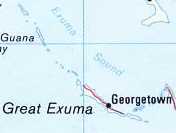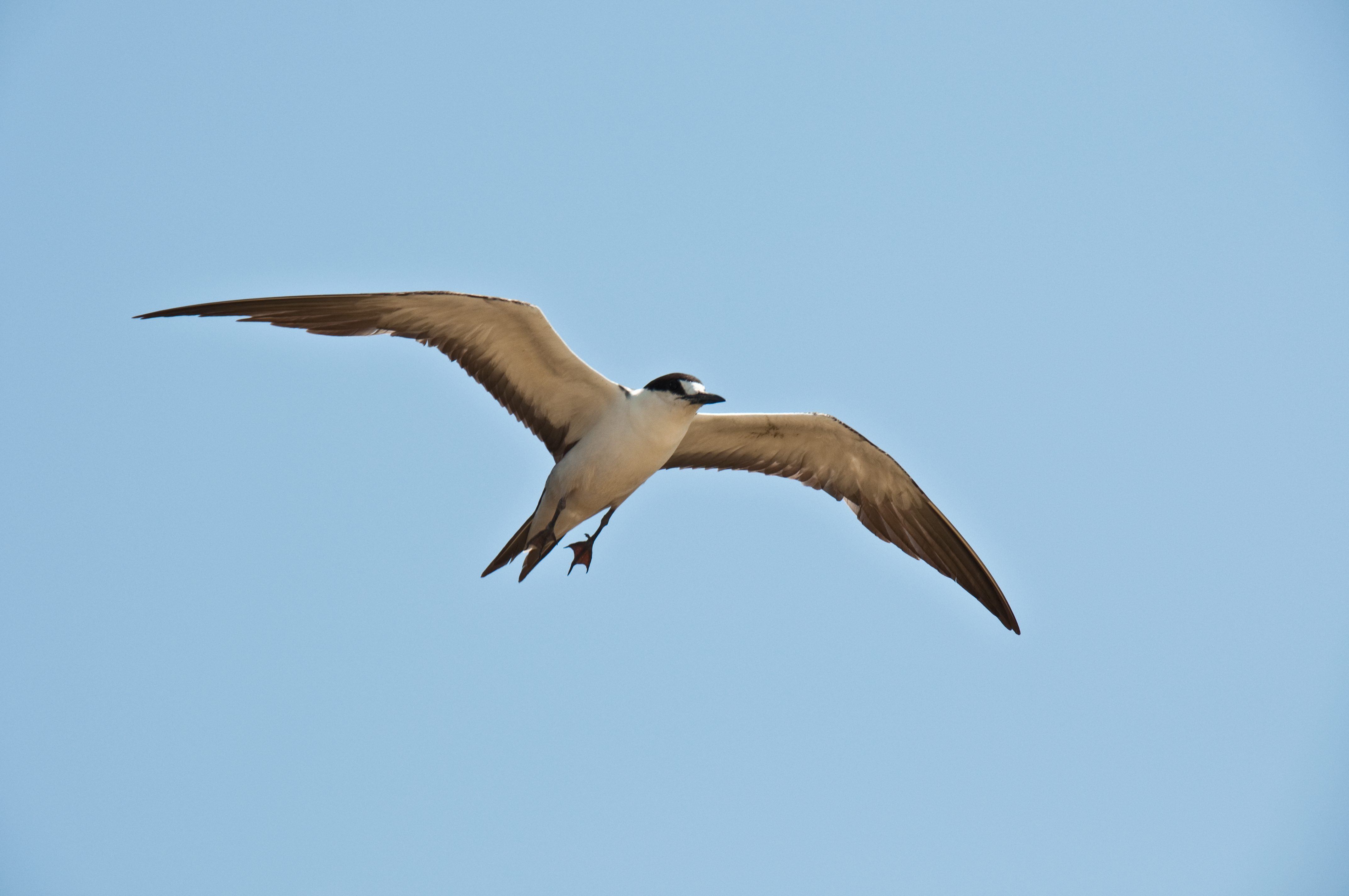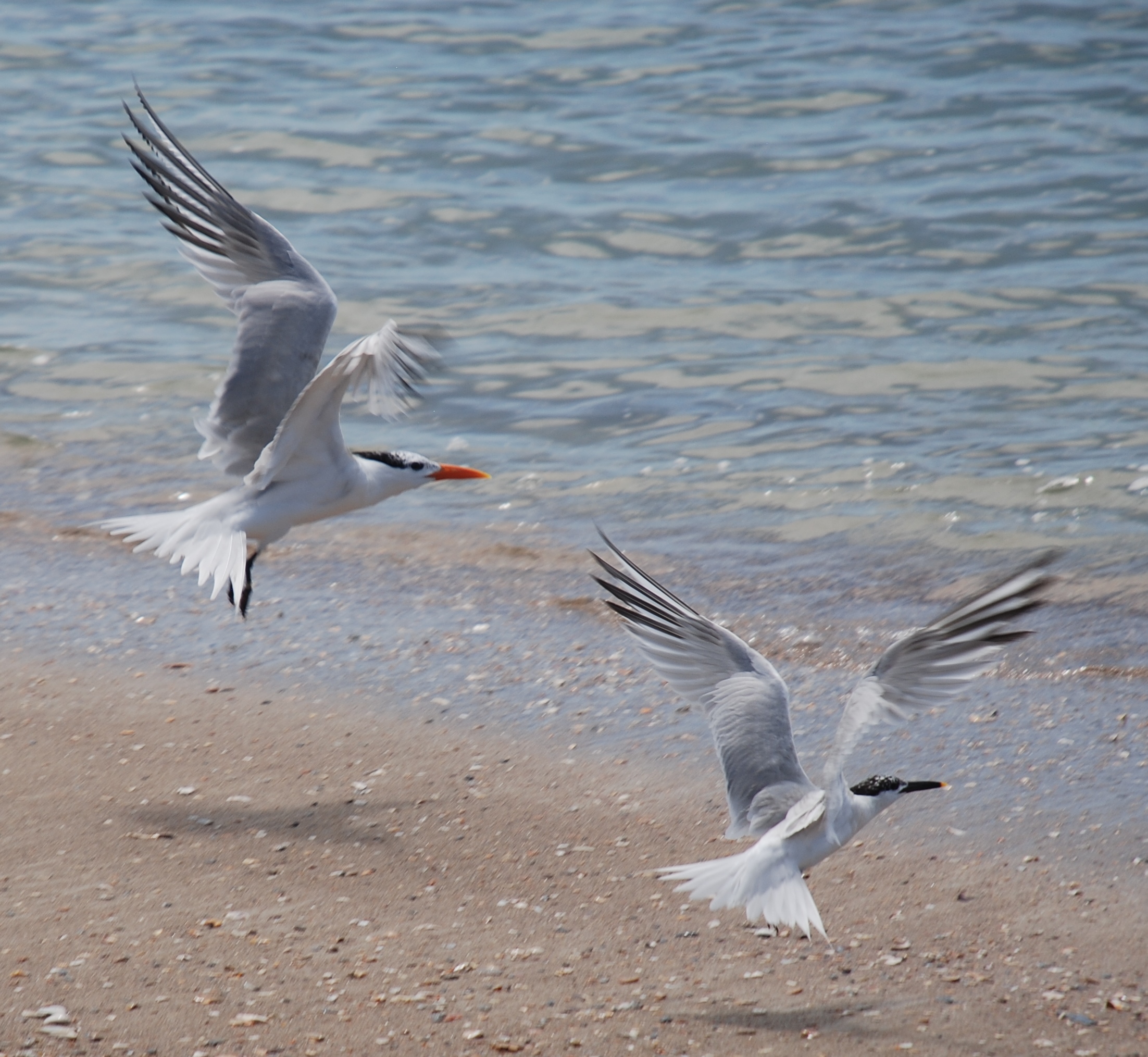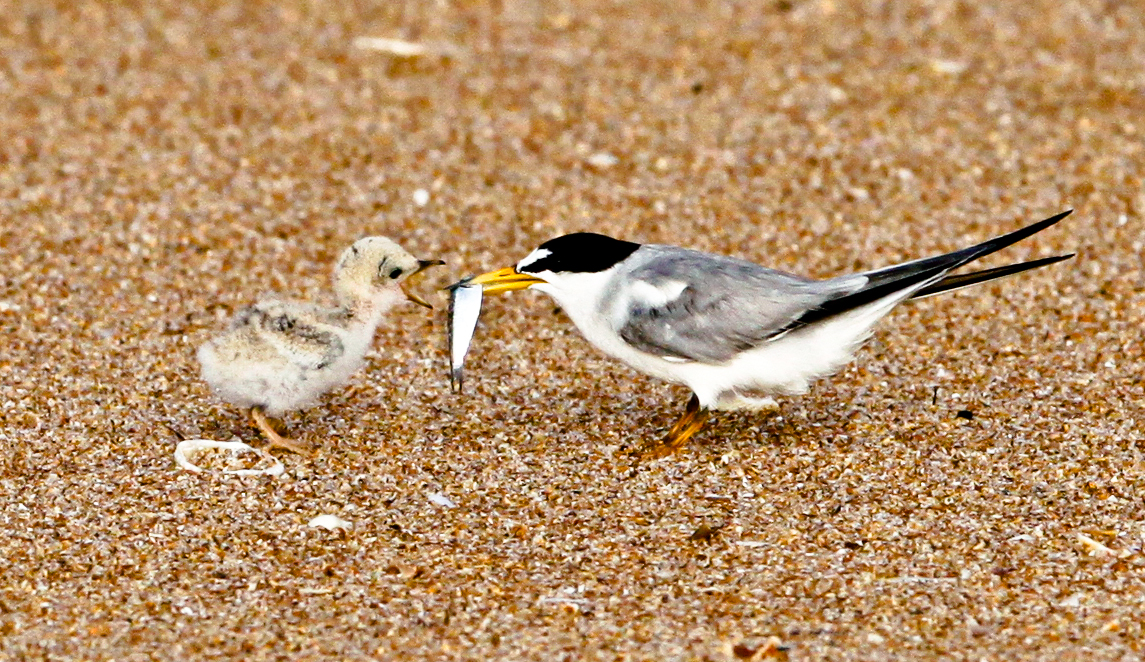|
Exuma Cays Land And Sea Park
The Exuma Cays Land and Sea Park is a protected area in the Exuma, Exuma Cays of the Bahamas. The protected area extends from Shroud Cay in the north to Bell Cay in the south. The vegetation consists of mangrove communities, with the east sides being clad in low scrub and the western sides with taller scrub. There are many epiphytic Orchidaceae, orchids and Bromeliaceae, bromeliads. History In 1953, Daniel Beard, a superintendent of Everglades National Park, proposed setting aside part of the Exuma Cays as a park. His idea was received enthusiastically, received support from the Nassau newspapers. In 1955 a formal proposal was submitted and on February 13, 1956 the Governor of the Bahamas confirmed that 22 miles of Exumas had been set aside providing some organization would undertake to give concrete recommendations to the Bahmamian Government. This organization would also be responsible for financial support of the park. Carleton Ray, an assistant director of the New York Aqua ... [...More Info...] [...Related Items...] OR: [Wikipedia] [Google] [Baidu] |
Exuma
Exuma is a district of The Bahamas, consisting of over 365 islands, also called cays. The largest of the cays is Great Exuma, which is 37 mi (60 km) in length and joined to another island, Little Exuma, by a small bridge. The capital and largest town in the district is George Town (population 1,437). It was founded 1793 and located on Great Exuma. Near the town, but on Little Exuma, the Tropic of Cancer runs across Pelican Beach lending it another name: Tropic of Cancer Beach. Its white sand and turquoise waters make it a world-famous destination. The entire island chain is 130 mi (209 km) long and 72 sq mi (187 km²) in area. Great Exuma island has an area of 61 sq mi (158 km²) while Little Exuma has an area of 11 sq mi (29 km²). Between 2000 and 2010, the population of Exuma more than doubled, reflecting the construction of large and small resort properties and the related direct air traffic to Great Exuma from locations as distant as Toro ... [...More Info...] [...Related Items...] OR: [Wikipedia] [Google] [Baidu] |
Bridled Tern
The bridled tern (''Onychoprion anaethetus'') is a seabird of the family Laridae. It is a bird of the tropical oceans. The scientific name is from Ancient Greek. The genus comes from ' meaning "claw" or "nail", and , meaning "saw". The specific ''anaethetus'' means "senseless, stupid". Description This is a medium-sized tern, at 30–32 cm in length and with a 77–81 cm wingspan similar to the common tern in size, but more heavily built. The wings and deeply forked tail are long, and it has dark grey upperparts and white underparts. The forehead and eyebrows are white, as is a striking collar on the hindneck. It has black legs and bill. Juvenile bridled terns are scaly grey above and pale below. This species is unlikely to be confused with any tern apart from the similarly dark-backed sooty tern and the spectacled tern from the Tropical Pacific. It is paler-backed than that sooty, (but not as pale as the grey-backed) and has a narrower white forehead and a pale neck ... [...More Info...] [...Related Items...] OR: [Wikipedia] [Google] [Baidu] |
Bell Island (The Bahamas)
Bell Island is a private island inside the Exuma Cays Land and Sea Park, in the island archipelago of the Exumas, which is in turn part of the Lucayan Archipelago. As of 2021, it was a territory of The Bahamas. The island has a surface of 349 acres. Sometimes the island is called Big Bell Island, and it is not to be confused with nearby Little Bell, which is also known as Cambridge Cay. Bell Island features a heliport and two large homes amid extensive landscaping, in addition to employee housing, etc. Three large guest cottages were renovated at a cost of $8 million, as designed by architects and interior designers of renown. The island was purchased for $100 million in 2009 and it is controlled by the Agha Khan. Environment In 2010, the sea bottom at Conch Cut inside the park was dredged so that the Khan's yacht could dock in the island. Senator Jerome Fitzgerald claimed 13 acres of sea bottom habitats had been destroyed. The Bahamas National Trust, which manages the Exuma C ... [...More Info...] [...Related Items...] OR: [Wikipedia] [Google] [Baidu] |
Osprey
The osprey (''Pandion haliaetus''), , also called sea hawk, river hawk, and fish hawk, is a diurnal, fish-eating bird of prey with a cosmopolitan range. It is a large raptor reaching more than in length and across the wings. It is brown on the upperparts and predominantly greyish on the head and underparts. The osprey tolerates a wide variety of habitats, nesting in any location near a body of water providing an adequate food supply. It is found on all continents except Antarctica, although in South America it occurs only as a non-breeding migrant. As its other common names suggest, the osprey's diet consists almost exclusively of fish. It possesses specialised physical characteristics and exhibits unique behaviour to assist in hunting and catching prey. As a result of these unique characteristics, it has been given its own taxonomic genus, ''Pandion'', and family, Pandionidae. Taxonomy The osprey was described by Carl Linnaeus under the name ''Falco haliaeetus'' in his ... [...More Info...] [...Related Items...] OR: [Wikipedia] [Google] [Baidu] |
Cyclura Cychlura Inornata
''Cyclura cychlura inornata'', the Allen Cays rock iguana or Allen Cays iguana, is a subspecies of the northern Bahamian rock iguana that is found on Allen's Cay and adjacent islands in the Bahamas. Its status in the IUCN Red List is critically endangered. The population has been growing over the last century. Although it was considered extinct in 1916, there are as of 2018 at least 482 mature adult animals counted on two islands, Leaf Cay and U Cay, and a few hundred on at least five other nearby islands where they have recently spread to by unknown means (introduced by biologists in one case), as well as many juveniles. Although this is a large lizard at 75cm, within one generation after some arrived on the small island of Allen's Cay, these iguanas grew to be twice as large here than those on other islands, which is believed to be due to the large amount of guano (bird droppings) this particular island receives. These particular giants have now been largely eliminated due to ... [...More Info...] [...Related Items...] OR: [Wikipedia] [Google] [Baidu] |
Sooty Tern
The sooty tern (''Onychoprion fuscatus'') is a seabird in the family Laridae. It is a bird of the tropical oceans, returning to land only to breed on islands throughout the equatorial zone. Taxonomy The sooty tern was described by Carl Linnaeus in 1766 as ''Sterna fuscata'', bearing this name for many years until the genus ''Sterna'' was split up. It is now known as ''Onychoprion fuscatus''. The genus name is from ancient Greek , "claw" or "nail", and , "saw". The specific ''fuscatus'' is Latin for "dark". Colloquially, it is known as the wideawake tern or just wideawake. This refers to the incessant calls produced by a colony of these birds, as does the Hawaiian name ''ʻewa ʻewa'' which roughly means "cacophony". In most of Polynesia its name is ''manutara'' or similar – literally "tern-bird", though it might be better rendered in English as "the tern" or "common tern". This refers to the fact that wherever Polynesian seafarers went on their long voyages, they usuall ... [...More Info...] [...Related Items...] OR: [Wikipedia] [Google] [Baidu] |
Sandwich Tern
The Sandwich tern (''Thalasseus sandvicensis'') is a tern in the family Laridae. It is very closely related to the lesser crested tern (''T. bengalensis''), Chinese crested tern (''T. bernsteini''), Cabot's tern (''T. acuflavidus''), and elegant tern (''T. elegans'') and has been known to interbreed with the lesser crested. It breeds in the Palearctic from Europe to the Caspian Sea wintering to South Africa, India and Sri Lanka. The Sandwich tern is a medium-large tern with grey upperparts, white underparts, a yellow-tipped black bill and a shaggy black crest which becomes less extensive in winter with a white crown. Young birds bear grey and brown scalloped plumage on their backs and wings. It is a vocal bird. It nests in a ground scrape and lays one to three eggs. Like all ''Thalasseus'' terns, the Sandwich tern feeds by plunge diving for fish, usually in marine environments, and the offering of fish by the male to the female is part of the courtship display. Taxonomy The t ... [...More Info...] [...Related Items...] OR: [Wikipedia] [Google] [Baidu] |
Royal Tern
The royal tern (''Thalasseus maximus'') is a tern in the family Laridae. The species is endemic to the Americas, though strays have been identified in Europe.Buckley, P. A. and F. G. Buckley (2020). Royal Tern (Thalasseus maximus), version 1.0. In Birds of the World (S. M. Billerman, Editor). Cornell Lab of Ornithology, Ithaca, NY, USA. https://doi.org/10.2173/bow.royter1.01 Retrieved April 17, 2021 Taxonomy The royal tern was described by the French polymath Georges-Louis Leclerc, Comte de Buffon in 1781 in his ''Histoire Naturelle des Oiseaux'' from a specimen collected in Cayenne, French Guiana. The bird was also illustrated in a hand-coloured plate engraved by François-Nicolas Martinet in the ''Planches Enluminées D'Histoire Naturelle'' which was produced under the supervision of Edme-Louis Daubenton to accompany Buffon's text. Neither the plate caption nor Buffon's description included a scientific name but in 1783 the Dutch naturalist Pieter Boddaert coined the binomial ... [...More Info...] [...Related Items...] OR: [Wikipedia] [Google] [Baidu] |
Roseate Tern
The roseate tern (''Sterna dougallii'') is a species of tern in the family Laridae. The genus name ''Sterna'' is derived from Old English "stearn", "tern", and the specific ''dougallii'' refers to Scottish physician and collector Dr Peter McDougall (1777–1814). "Roseate" refers to the bird's pink breast in breeding plumage. Taxonomy English naturalist George Montagu described the roseate tern in 1813. Genetically, it is most closely related to the white-fronted tern (''S. striata''), with their common ancestor a sister lineage to the black-naped tern (''S. sumatrana''). This species has a number of geographical races, differing mainly in bill colour and minor plumage details. ''S. d. dougallii '' breeds on the Atlantic coasts of Europe and North America, and winters south to the Caribbean and west Africa. Both the European and North American populations have been in long term decline, though active conservation measures have reversed the decline in the last few years at som ... [...More Info...] [...Related Items...] OR: [Wikipedia] [Google] [Baidu] |
Least Tern
The least tern (''Sternula antillarum'') is a species of tern that breeds in North America and locally in northern South America. It is closely related to, and was formerly often considered conspecific with, the little tern of the Old World. Other close relatives include the yellow-billed tern and Peruvian tern, both from South America. It is a small tern, long, with a wingspan of , and weighing . The upper parts are a fairly uniform pale gray, and the underparts white. The head is white, with a black cap and line through the eye to the base of the bill, and a small white forehead patch above the bill; in winter, the white forehead is more extensive, with a smaller and less sharply defined black cap. The bill is yellow with a small black tip in summer, all blackish in winter. The legs are yellowish. The wings are mostly pale gray, but with conspicuous black markings on their outermost primaries. It flies over water with fast, jerky wingbeats and a distinctive hunchback appearan ... [...More Info...] [...Related Items...] OR: [Wikipedia] [Google] [Baidu] |
Brown Noddy
The brown noddy or common noddy (''Anous stolidus'') is a seabird in the family Laridae. The largest of the noddies, it can be told from the closely related black noddy by its larger size and plumage, which is dark brown rather than black. The brown noddy is a tropical seabird with a worldwide distribution, ranging from Hawaii to the Tuamotu Archipelago and Australia in the Pacific Ocean, from the Red Sea to the Seychelles and Australia in the Indian Ocean and in the Caribbean to Tristan da Cunha in the Atlantic Ocean. The brown noddy is colonial, usually nesting on elevated situations on cliffs or in short trees or shrubs. It only occasionally nests on the ground. A single egg is laid by the female of a pair each breeding season. In India, the brown noddy is protected in the PM Sayeed Marine Birds Conservation Reserve. Taxonomy The first formal description of the brown noddy was by the Swedish naturalist Carl Linnaeus in 1758 in the tenth edition of his ''Systema Naturae'' u ... [...More Info...] [...Related Items...] OR: [Wikipedia] [Google] [Baidu] |
The Bahamas
The Bahamas (), officially the Commonwealth of The Bahamas, is an island country within the Lucayan Archipelago of the West Indies in the Atlantic Ocean, North Atlantic. It takes up 97% of the Lucayan Archipelago's land area and is home to 88% of the archipelago's population. The archipelagic state consists of more than 3,000 islands, cays, and islets in the Atlantic Ocean, and is located north of Cuba and northwest of the island of Hispaniola (split between the Dominican Republic and Haiti) and the Turks and Caicos Islands, southeast of the U.S. state of Florida, and east of the Florida Keys. The capital is Nassau, Bahamas, Nassau on the island of New Providence. The Royal Bahamas Defence Force describes The Bahamas' territory as encompassing of ocean space. The Bahama Islands were inhabited by the Lucayan people, Lucayans, a branch of the Arawakan-Taino language, speaking Taíno, for many centuries. Christopher Columbus was the first European to see the islands, making hi ... [...More Info...] [...Related Items...] OR: [Wikipedia] [Google] [Baidu] |




_(6).jpg)


